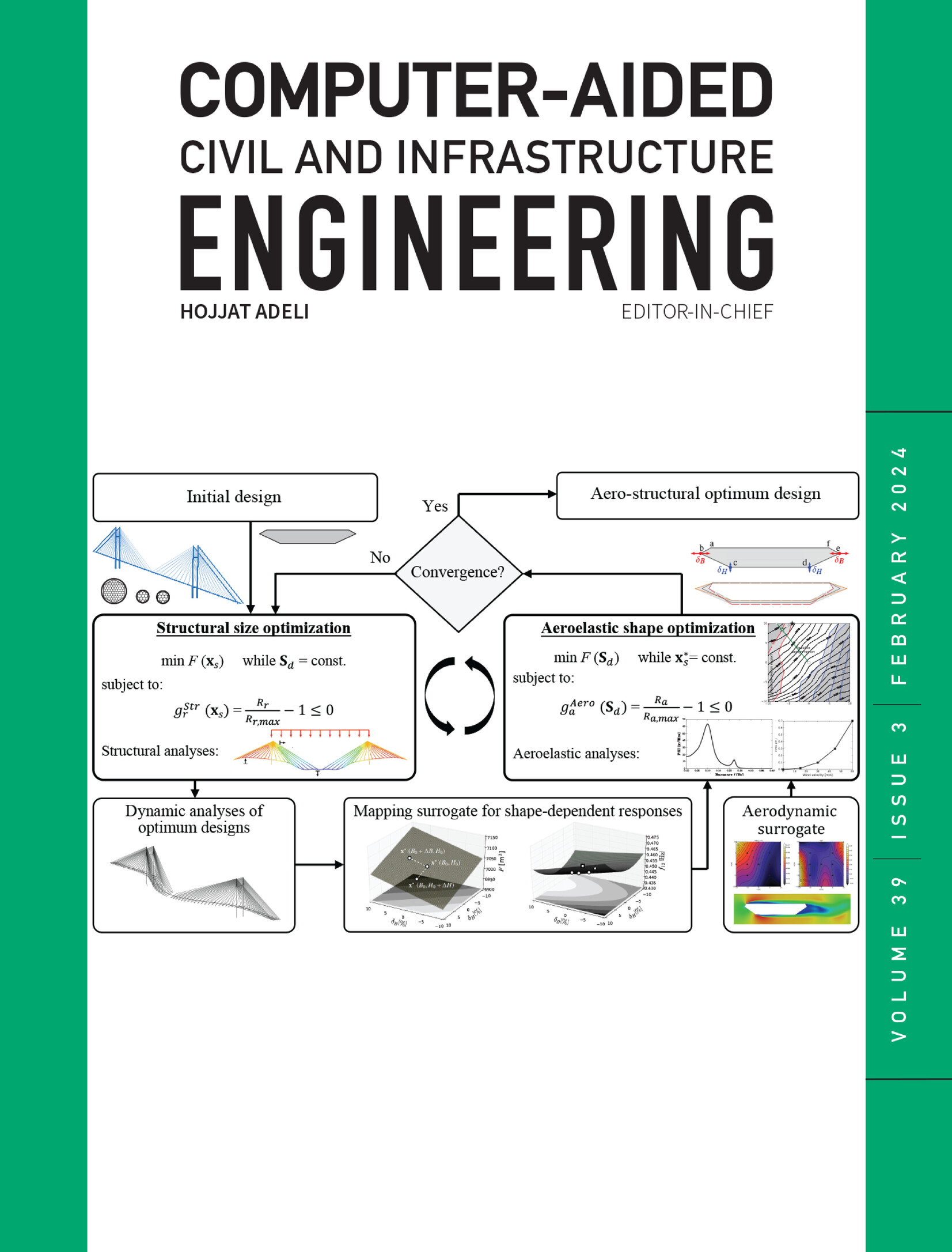Generative adversarial network based on domain adaptation for crack segmentation in shadow environments
IF 9.1
1区 工程技术
Q1 COMPUTER SCIENCE, INTERDISCIPLINARY APPLICATIONS
引用次数: 0
Abstract
Precision segmentation of cracks is important in industrial non-destructive testing, but the presence of shadows in the actual environment can interfere with the segmentation results of cracks. To solve this problem, this study proposes a two-stage domain adaptation framework called GAN-DANet for crack segmentation in shadowed environments. In the first stage, CrackGAN uses adversarial learning to merge features from shadow-free and shadowed datasets, creating a new dataset with more domain-invariant features. In the second stage, the CrackSeg network innovatively integrates enhanced Laplacian filtering (ELF) into high-resolution net to enhance crack edges and texture features while filtering out shadow information. In this model, CrackGAN addresses domain shift by generating a new dataset with domain-invariant features, avoiding direct feature alignment between source and target domains. The ELF module in CrackSeg effectively enhances crack features and suppresses shadow interference, improving the segmentation model's robustness in shadowed environments. Experiments show that GAN-DANet improves the crack segmentation accuracy, with the mean intersection over union value increasing from 57.87 to 75.03, which surpasses the performance of existing state-of-the-art domain adaptation algorithms.基于域自适应的生成对抗网络在阴影环境下的裂缝分割
裂纹的精确分割在工业无损检测中具有重要意义,但实际环境中阴影的存在会干扰裂纹的分割结果。为了解决这一问题,本研究提出了一种称为GAN-DANet的两阶段域自适应框架,用于阴影环境下的裂缝分割。在第一阶段,CrackGAN使用对抗性学习来合并无阴影和阴影数据集的特征,创建一个具有更多域不变特征的新数据集。在第二阶段,CrackSeg网络创新地将增强拉普拉斯滤波(enhanced Laplacian filtering, ELF)集成到高分辨率网络中,增强裂缝边缘和纹理特征,同时滤除阴影信息。在该模型中,CrackGAN通过生成具有域不变特征的新数据集来解决域移位问题,避免了源域和目标域之间的直接特征对齐。CrackSeg中的ELF模块有效增强了裂缝特征,抑制了阴影干扰,提高了分割模型在阴影环境下的鲁棒性。实验表明,GAN-DANet算法提高了裂缝分割的精度,平均交集/联合值从57.87提高到75.03,优于现有的最先进的域自适应算法。
本文章由计算机程序翻译,如有差异,请以英文原文为准。
求助全文
约1分钟内获得全文
求助全文
来源期刊
CiteScore
17.60
自引率
19.80%
发文量
146
审稿时长
1 months
期刊介绍:
Computer-Aided Civil and Infrastructure Engineering stands as a scholarly, peer-reviewed archival journal, serving as a vital link between advancements in computer technology and civil and infrastructure engineering. The journal serves as a distinctive platform for the publication of original articles, spotlighting novel computational techniques and inventive applications of computers. Specifically, it concentrates on recent progress in computer and information technologies, fostering the development and application of emerging computing paradigms.
Encompassing a broad scope, the journal addresses bridge, construction, environmental, highway, geotechnical, structural, transportation, and water resources engineering. It extends its reach to the management of infrastructure systems, covering domains such as highways, bridges, pavements, airports, and utilities. The journal delves into areas like artificial intelligence, cognitive modeling, concurrent engineering, database management, distributed computing, evolutionary computing, fuzzy logic, genetic algorithms, geometric modeling, internet-based technologies, knowledge discovery and engineering, machine learning, mobile computing, multimedia technologies, networking, neural network computing, optimization and search, parallel processing, robotics, smart structures, software engineering, virtual reality, and visualization techniques.

 求助内容:
求助内容: 应助结果提醒方式:
应助结果提醒方式:


